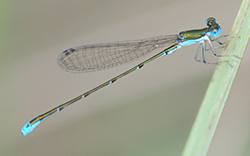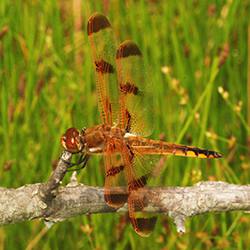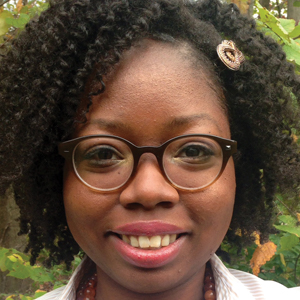Pursuing dragons and damsels with Hal White
Harold White III, a professor of chemistry and biochemistry at the University of Delaware, recently won the 2015 Educator of the Year in Higher Education award from the Delaware BioScience Association. White, who runs the Howard Hughes Medical Institute Undergraduate Science Education Program at the university, was also the winner of the 2014 Award for Exemplary Contributions to Education from the American Society for Biochemistry and Molecular Biology.
White earned his bachelor’s degree at the Pennsylvania State University and his doctorate in biochemistry at Brandeis University. He was a National Science Foundation postdoctoral chemistry fellow at Harvard University. In 1971, he became a faculty member at the University of Delaware, where he has done protein chemistry research and taught chemistry and biochemistry and where he developed a strong interest in using problem-based learning in his biochemistry courses.
Beyond the classroom and laboratory, White likes to find, observe and photograph dragonflies and damselflies (members of the carnivorous Odonata order of insects) whenever and wherever he can. Dragonflies and damselflies have large eyes, short antennas and four large wings. Dragonflies are usually larger, more robust and stronger fliers than the smaller and more delicate damselflies. White developed an interest in these insects in high school. In college, he tried to merge his interests in dragonflies and biochemistry with an undergraduate research project studying isoenzymes of glycerol-3-phosphate dehydrogenase. Without realizing the significance at the time, he observed a huge increase in the activity of that enzyme during metamorphosis in dragonflies. While that research never was published, it significantly influenced his graduate career.
 Harold White III
Harold White III
For many years, he and his family spent their summer vacations in Maine on Mount Desert Island and in its vicinity, where many northern species of odonates live. In 2011, he published “Natural History of Delmarva Dragonflies and Damselflies: Essays of a Lifetime Observer,” a book that reveals his passion for these insects.
Our conversation has been edited for length and clarity.
What sparked your interest in science?
I have been interested in nature activities since as early as I can remember. My interest in dragonflies and damselflies started when I was in junior high school. I was thinking of majoring in entomology in college when a geologist who also had an interest in dragonflies told me, "Whatever you do, don't major in entomology. Keep it a hobby. In college, major in the most difficult thing you enjoy." That advice might not be good for every budding entomologist, but it worked well for me. When I applied to college at Penn State and had to choose a major, I knew I liked chemistry and biology, so I checked the box marked “biochemistry,” even though I was not sure what it was.
How did you get interested in dragonflies and damselflies?
My earliest interest in odonates was kindled by George and Alice Beatty, biologists who lived near me in central Pennsylvania. We met one summer evening in 1957 when they stopped for an ice cream at a frozen custard stand where I and a friend, armed with nets, were catching sphinx moths and silk moths around the lights. The Beattys were willing to help us as emerging entomologists. They transferred my interests from Lepidoptera (moths and butterflies), a usual interest of youngsters, to their primary interest, Odonata. One day in 1959, I saw an Anax longipes, a large, rare, brightly colored dragonfly that was notoriously difficult to catch. George Beatty challenged me to catch it and offered $10 for a specimen. A week later, after many failed attempts, I caught it!
Where do you like to go to observe dragonflies and damselflies?
 The Southern sprite is a tiny damselfly found in the swamps of the Southeastern U.S.
The Southern sprite is a tiny damselfly found in the swamps of the Southeastern U.S.
I observe dragonflies wherever they are. That is part of my enjoyment, because different species have different habitat preferences. Thus, I revel in wading in a swift-flowing, boulder-strewn mountain stream as much as slogging knee-deep in a steamy bog surrounded by deer flies. Sitting by a farm pond watching many of our more common dragonflies flying around is enjoyable, but I most enjoy the search for rare and elusive species in places few people go.
What inspired you to write your book about Odonata of the Delmarva Peninsula?
I originally was approached by two people from the Delaware Nature Society to write a book about dragonflies of Delmarva, a defined area I knew well. In contrast with when I started observing dragonflies, there were now many field guides to help with identification. Writing yet another identification book was not my goal. Instead, I wanted a book that had an eclectic mix of information. I wanted to include stories using each of the more than 120 species found on the Delmarva Peninsula as a point of departure. The table of contents is unique in that the two-page entry for each species is referenced in three ways — by the scientific name, by the common name and by a catchy title. I have a mix: Some are stories sharing my experiences, and some relate to history and descriptions of dragonflies, and some are about their biology and behavior. I wanted this book to be of interest to both amateurs and experts.
What can the reader expect to learn from reading your book?
 The painted skimmer, an uncommon dragonfly, is about 1.7 inches long.
The painted skimmer, an uncommon dragonfly, is about 1.7 inches long.
I think of my book as having the potential for reading enjoyment — with vignettes about dragonflies that can be read in small doses or cover-to-cover, perhaps even as bedtime reading. I have some more formal information about Odonata in the book but did not present it in the structure of a field guide or a textbook. In addition, there are many tidbits in my book that would not be found in other books about dragonflies and damselflies. Biochemical topics are mentioned infrequently.
One of my daughters, an elementary-school teacher, thought that the book could be the point of departure for teaching biology using examples students could observe and explore. In the book, I suggest science projects that some enterprising students might work on.
What have you gained from having this hobby?
Being a scientist requires commitment and willingness to devote time, energy and productive thinking into one's work. Hopefully most scientists consider their work as having some elements of enjoyment, but having something quite different that one enjoys – be it music, sports, photography, woodworking, travel, family, gardening or whatever – is important to refresh one’s mind and keep things in perspective.
Enjoy reading ASBMB Today?
Become a member to receive the print edition four times a year and the digital edition monthly.
Learn moreGet the latest from ASBMB Today
Enter your email address, and we’ll send you a weekly email with recent articles, interviews and more.
Latest in People
People highlights or most popular articles

Mydy named Purdue assistant professor
Her lab will focus on protein structure and function, enzyme mechanisms and plant natural product biosynthesis, working to characterize and engineer plant natural products for therapeutic and agricultural applications.

In memoriam: Michael J. Chamberlin
He discovered RNA polymerase and was an ASBMB member for nearly 60 years.

Building the blueprint to block HIV
Wesley Sundquist will present his work on the HIV capsid and revolutionary drug, Lenacapavir, at the ASBMB Annual Meeting, March 7–10, in Maryland.

In memoriam: Alan G. Goodridge
He made pioneering discoveries on lipid metabolism and was an ASBMB member since 1971.

Alrubaye wins research and teaching awards
He was honored at the NACTA 2025 conference for the Educator Award and at the U of A State and National Awards reception for the Faculty Gold Medal.

Designing life’s building blocks with AI
Tanja Kortemme, a professor at the University of California, San Francisco, will discuss her research using computational biology to engineer proteins at the 2026 ASBMB Annual Meeting.

